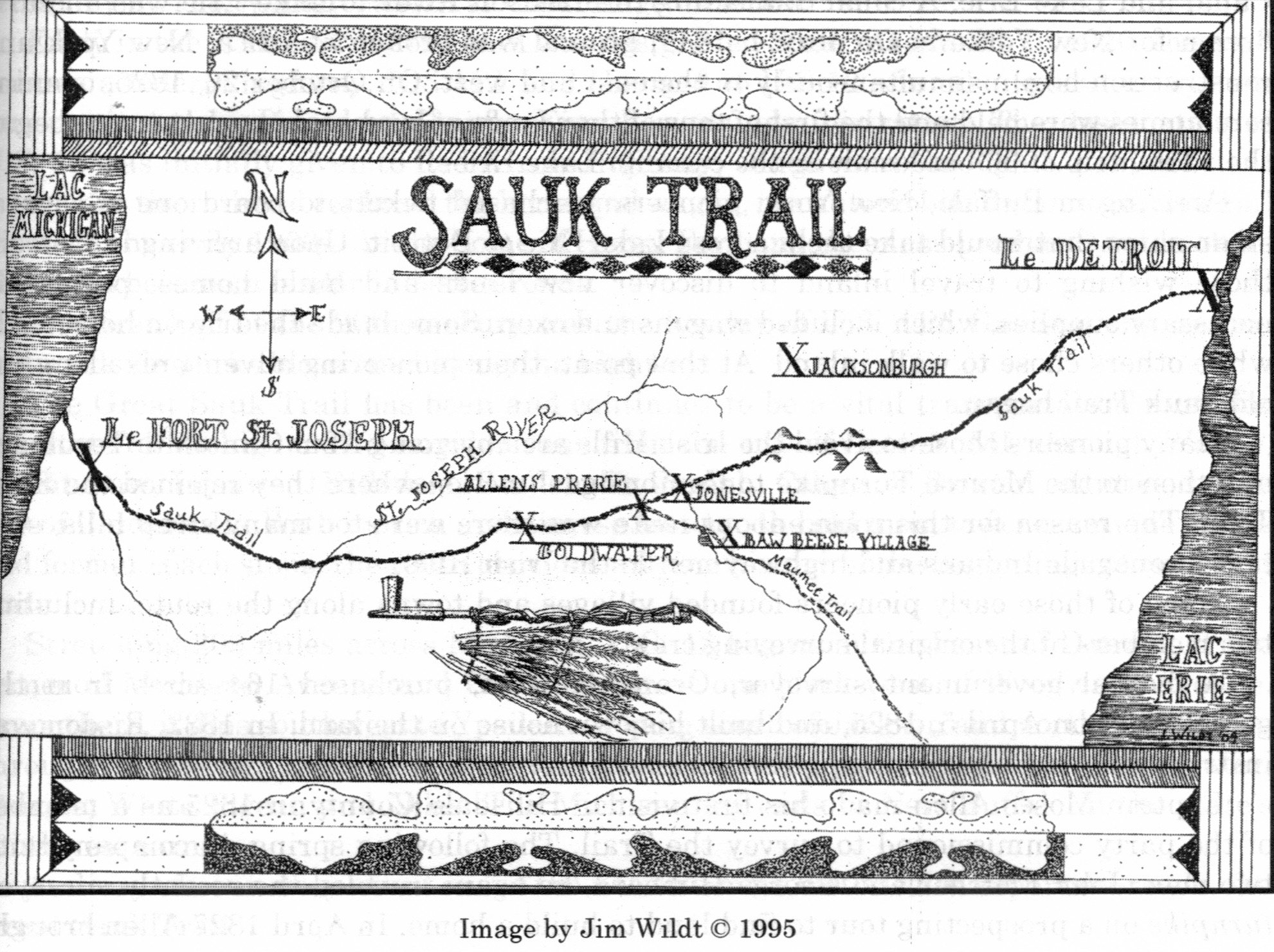The Sauk Trail: The Ancient Road That Became Michigan’s US-12
Long before highways crisscrossed Michigan, long before steamships and railroads, there was a road that linked the heart of the Great Lakes to points east and west — the Sauk Trail. What began as a Native American footpath became one of Michigan’s most important thoroughfares, eventually evolving into modern-day US-12, a route that continues to tell the story of travel, trade, and settlement in the region.
The Origins of the Sauk Trail
The Sauk Trail — also known as the Chicago Road in its later history — has roots that stretch back centuries. This ancient route was created and used by the Sauk people and other Indigenous nations for travel, hunting, and trade. The trail followed the natural contours of the land, skirting swamps and rivers, climbing high ground for easier passage, and linking tribal communities across what is now southern Michigan, northern Indiana, and Illinois.
From Detroit to Chicago, the Sauk Trail was a vital corridor long before European settlers arrived.
The Sauk Trail Becomes the Chicago Road
In the early 1800s, as Michigan Territory opened to settlement, the old trail became a key military and migration route. By 1825, Congress funded the improvement of the Sauk Trail into what was called the Chicago Road — a means to connect Detroit with the growing settlement of Chicago.
➡ Pioneers used the road to head west in wagons.
In the early 1800s, the Sauk Trail became a vital artery for settlers seeking new opportunities beyond the Great Lakes frontier. Families packed all they owned into wagons — food, tools, seed, and keepsakes — and rumbled westward along this ancient Native American path. The trail’s gentle grades and natural clearings made it a favored route across Michigan’s forests and prairies. For these pioneers, the Sauk Trail wasn’t just a road — it was the gateway to their hopes of farmland, prosperity, and a new start.
➡ Soldiers marched along it during times of conflict.
Throughout its history, the Sauk Trail bore the boots of soldiers defending or expanding the young nation. During the War of 1812, troops moved along sections of the trail, securing key outposts like Detroit and Fort Dearborn (Chicago). Later, during times of tension with Native American nations and in the Civil War era, militia units and supply wagons followed the familiar path of the trail, using it to move men, arms, and provisions between forts and frontier settlements.
➡ Stagecoaches and mail carriers brought news and goods along its path.
By the mid-1800s, the Sauk Trail became part of a lifeline of communication and commerce. Stagecoaches clattered along its dusty stretches, carrying passengers, freight, and vital mail between Detroit, Chicago, and the communities along the way. Inns and taverns, like the famous Walker Tavern near Cambridge Junction, sprang up as welcome stops for weary travelers and drivers. The trail buzzed with life as news from the east, parcels, and letters made their way to settlers hungry for word from home — or the latest headlines of the day.
The road spurred the development of towns like Niles, Coldwater, Jonesville, and Ypsilanti — communities that prospered thanks to travelers, traders, and commerce.
From Trail to Highway: The Birth of US-12
As automobiles transformed travel in the 20th century, the Chicago Road evolved again. It was designated part of the federal US highway system in 1926, becoming US-12.
Early motorists cruised along US-12, following the familiar path through Michigan’s southern tier as they passed scenic farmland, paused at roadside diners and motor courts, and journeyed toward Chicago, the Indiana Dunes, or Michigan’s inviting beach towns.
Even today, US-12 retains much of its charm: vintage gas stations, historic inns, and roadside attractions dot the way, offering a glimpse into the past.
US-12 Today: A Historic Byway
US-12 is now a designated historic heritage route in Michigan. Driving it offers more than a way to get from point A to B — it’s a journey through centuries of Great Lakes history.
Whether you’re passing through quaint downtowns, crossing historic bridges, or spotting landmarks like the Michigan International Speedway or the old stagecoach stops, US-12 invites you to slow down and connect with the land’s rich stories.


